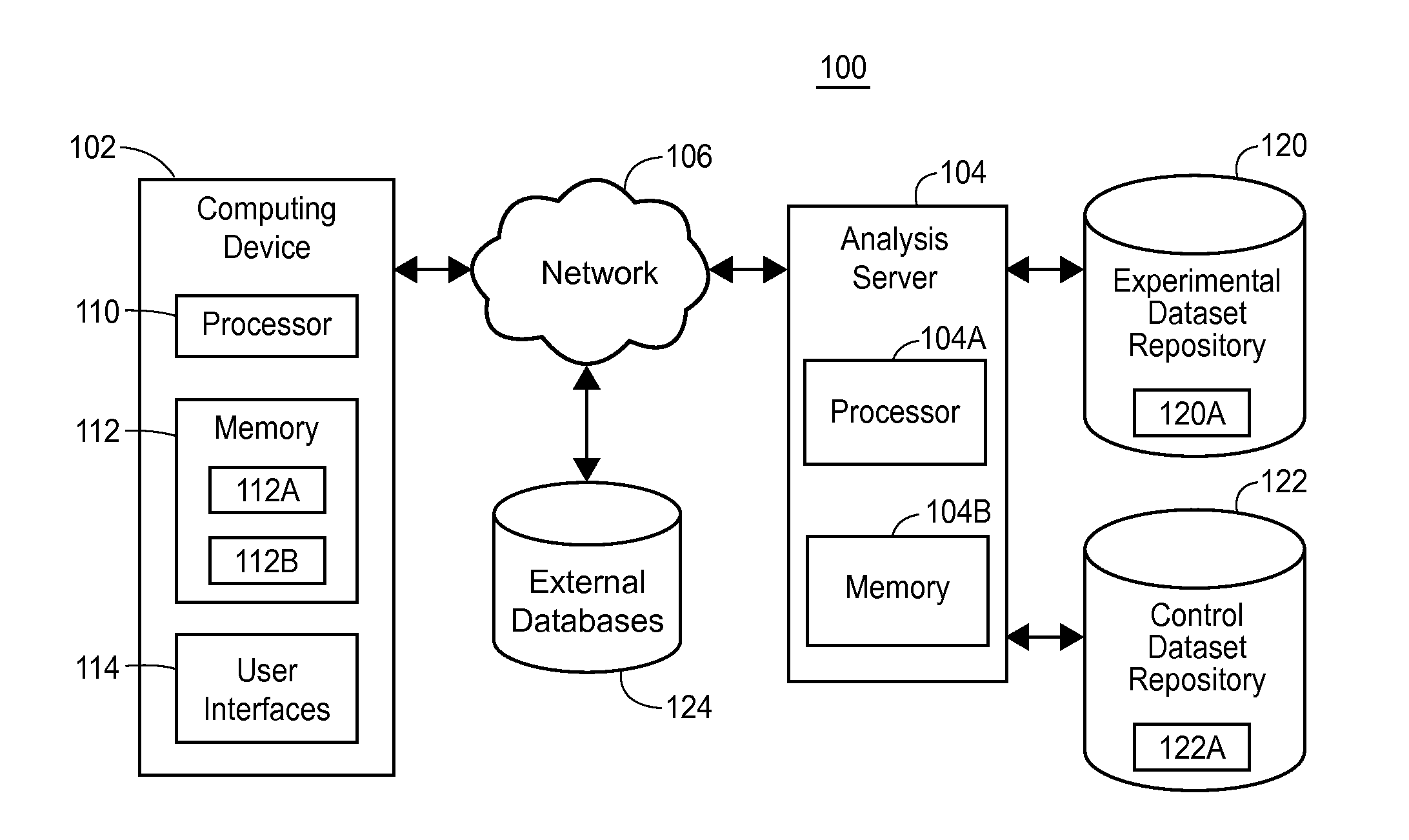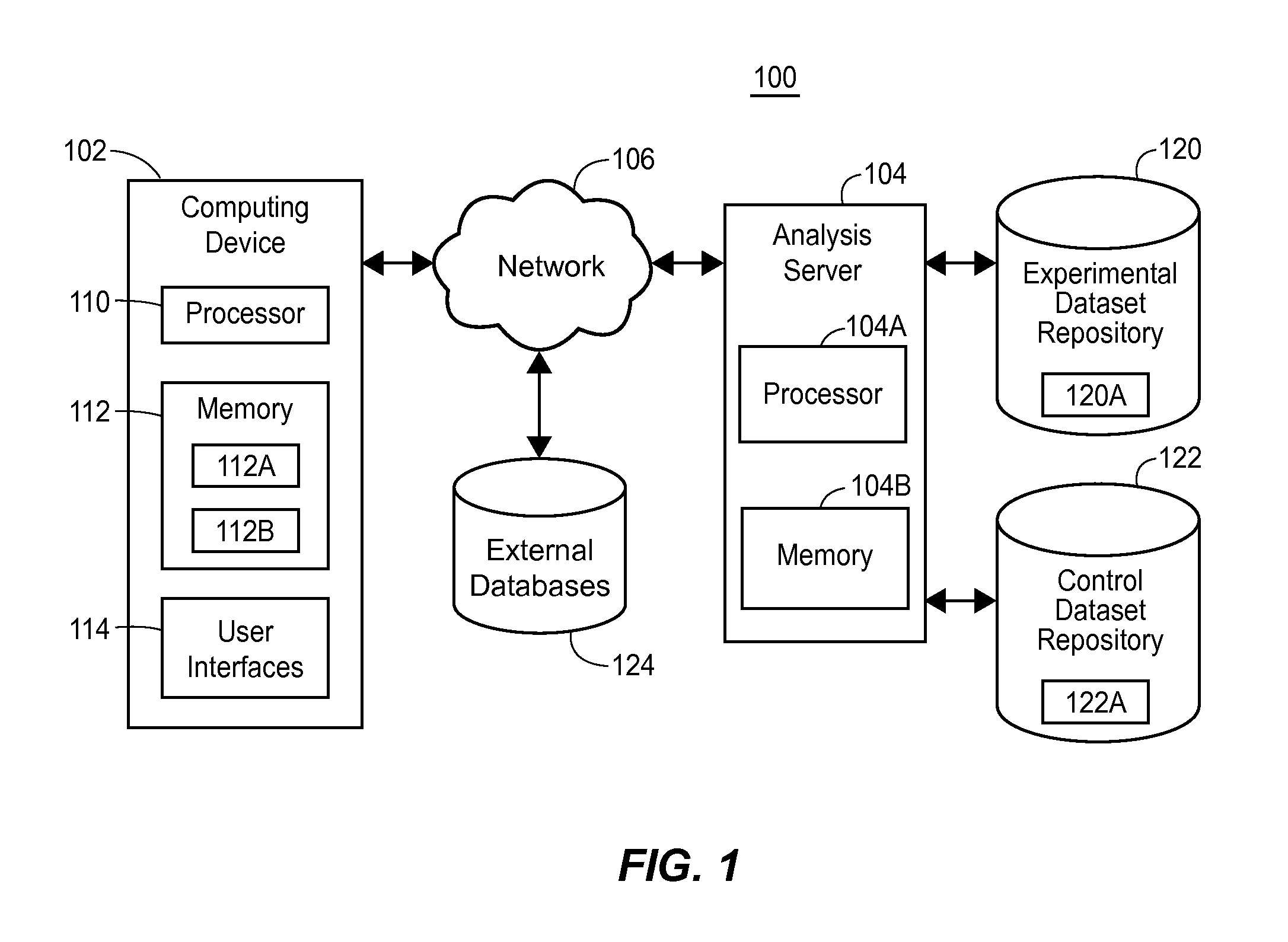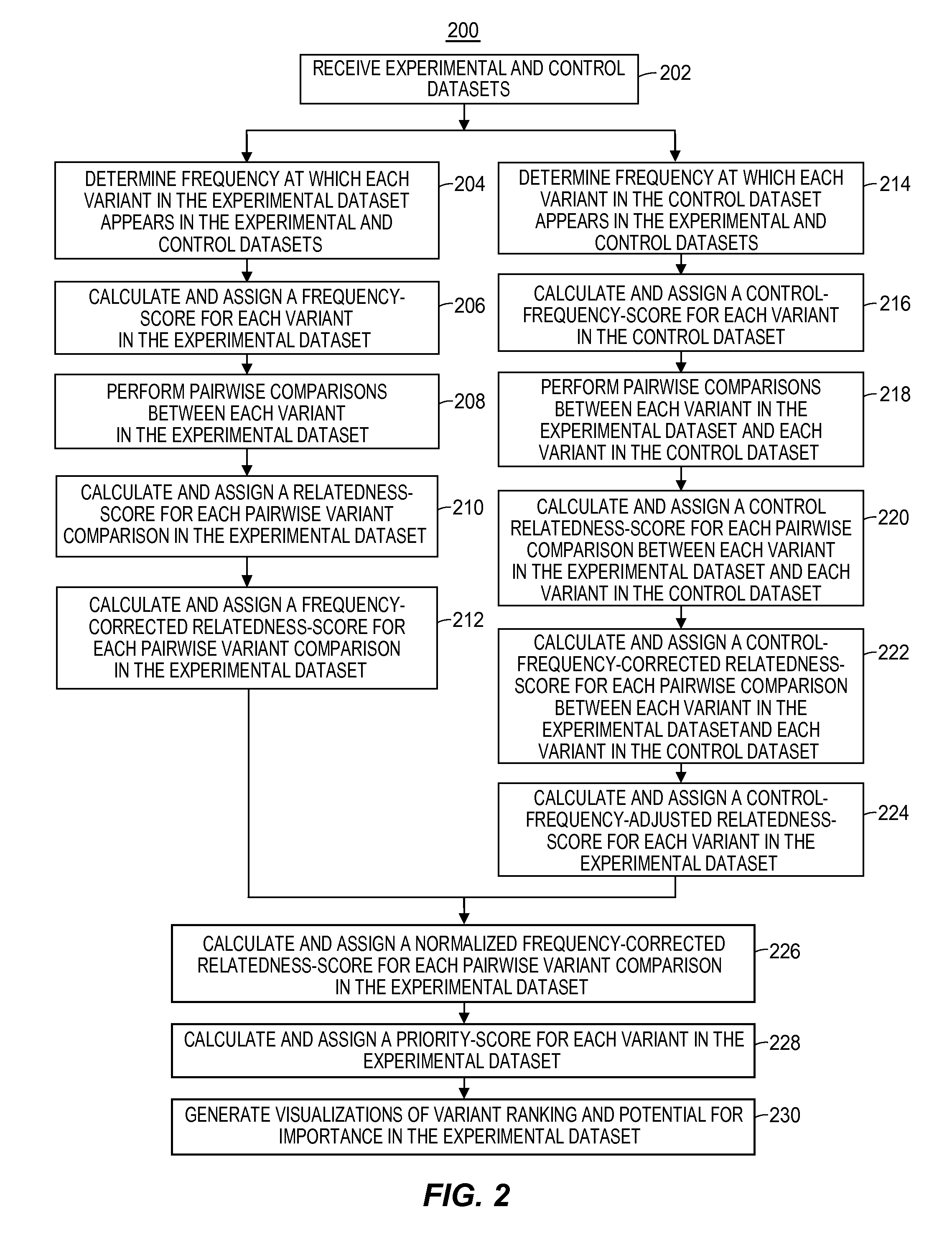Systems and methods for genomic variant analysis
- Summary
- Abstract
- Description
- Claims
- Application Information
AI Technical Summary
Benefits of technology
Problems solved by technology
Method used
Image
Examples
Embodiment Construction
[0020]Recent and on-going advances in DNA sequencing technology promise to revolutionize the field of medicine such as the way clinicians understand disease mechanisms, the way disease itself is diagnosed, and the way patients are treated and counseled. Significant changes in the practice of clinical medicine are already occurring as a result of genomic sequencing. Moreover, the potential applications of genome sequencing are likely to extend outside of the field of medicine itself. Specifically, human genome sequencing may play important roles in forensic pathology and law; in social interactions and interpersonal relationships; in psychology and entertainment based on personal information such as genealogy; in data security and cryptology; in military applications and other security operations; and in any research that strives to gain a better understanding of human biology, including but not limited to, human disease, among others. Further, there are many applications of genome s...
PUM
 Login to View More
Login to View More Abstract
Description
Claims
Application Information
 Login to View More
Login to View More - R&D
- Intellectual Property
- Life Sciences
- Materials
- Tech Scout
- Unparalleled Data Quality
- Higher Quality Content
- 60% Fewer Hallucinations
Browse by: Latest US Patents, China's latest patents, Technical Efficacy Thesaurus, Application Domain, Technology Topic, Popular Technical Reports.
© 2025 PatSnap. All rights reserved.Legal|Privacy policy|Modern Slavery Act Transparency Statement|Sitemap|About US| Contact US: help@patsnap.com



